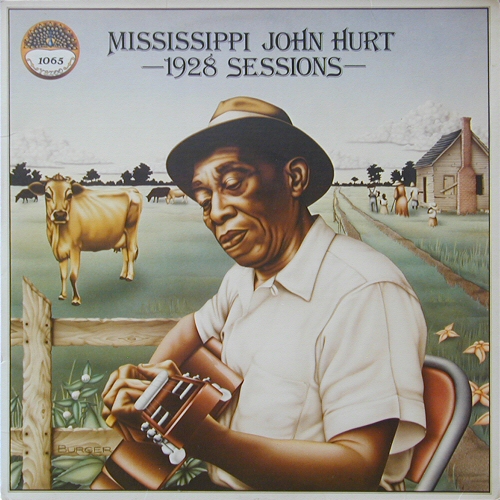 I have already stated before how nuts I am about nuts. But I am also crazy about seeds. And what I really love doing is getting them all together on a pan and roasting them slowly.
I have already stated before how nuts I am about nuts. But I am also crazy about seeds. And what I really love doing is getting them all together on a pan and roasting them slowly.So, this is a post about roasted nuts and seeds at which point I should also add the following warning: This post contains nuts. Nuts may trigger off allergies of which you are unaware, so, please, check with your GP before reading this column.
My love affair with this snack started recently after a trip to Spain four years ago. My brother-in-law's girlfriend served us roasted pumpkin and sunflower seeds as a nibble and they were so yummy that I bought some after when we went to Órgiva, the nearby town. Back in the UK I began to experiment with Brazil nuts, cashew nuts and almonds. The results were great and a bond was formed.
Everyday after lunch I have a small plate of roasted nuts and seeds which I have prepared the night before and put in the fridge. They are a delicious dessert after my sandwich and bowl of fresh fruit. I do sprinkle some sugar on top when I am cooking them, but that's the Cuban in me, I like my nuts to be sweet... Oh dear, I just read that last sentence again and... all right, never you mind, I like my nuts to be sweet, yes.
Nuts and Seeds
A handful of the following:
Brazil nuts
Peanuts (I buy the redskin variety)
Cashew Nuts
Pecan nuts
Almonds
Pecan nuts
Almonds
Hazelnuts
Pumpkin seeds
Hemp seeds
Sunflower seeds
Sugar (a teaspoonful), this is optional and to be honest with you, not necessary. When I roast nuts and seeds at home, I have to be quick if I want to sprinkle some sugar on top because both my wife and I are very strict with our children's sugar consumption, therefore the last thing I need is one of them walking in on me and catching me red-handed. Yes, parental hypocrisy, who doesn't suffer from it? And did I mention the dollop of chocolate spread that I sometimes mix with the nuts and seeds and that I then justify to the children that it is nothing but the Brazil nuts getting a bit too burned? And how about the tiny, teeny... OK, the two scoops of Vanilla ice-cream I occasionally put in? Anyway, it's up to you.
You might think that roasting nuts and seeds is an easy task but my first few attempts met with failure. The results were quite, how to put it, charred instead of the sun-kissed colour I was expecting. And herein I would also like to mention what to me is a fundamental ingredient in the kitchen: patience. Slow cooking is my motto. In fact I was keen to start a food revolution called 'slowism' until someone told me that they had a similar movement in the States. Thieves, it was my idea! I was just too slow to patent it.
My cooker is electric which means it has numbers 1-8, with 1 representing low fire and 8 the temperature at which you usually boil water. So, I put my nuts and seeds to roast at mark 4, then take it down a couple of notches, toss them about the pan a little bit and then ratchet it up to 4 again until they are done.
Since I am posting this in summertime, even though this is a recipe for all seasons, the music that comes to mind is one that has a slow groove, that builds progressively towards a crescendo, or that stays steadily imperturbable within the parametres of its own tempo.
And so we turn our attention to an artist who, long before she tried to become Mama Africa and adopt every single child on that continent, was a very good performer indeed and made brilliant catchy pop tunes. Madonna has always been a package and this video, with its funky bassline and beautiful black and white photography, is evidence of her genius. And as I see those nuts and seeds mixing promiscously on my pan I can't help but think of singing out to them: 'Things haven't been the same/Since you came into my life/You found a way to touch my soul/And I'm never ever ever gonna let it go'.
The second tune is by a composer whose work I revere but who polarises music lovers down the very middle. Phillip Glass deserves his own post and I will make sure he gets one in due course, however in the meantime I would like to offer this piece to you, my dear fellow bloggers, readers and followers. In the same way that under the placid surface of the nuts and seeds I roast on my pan a turmoil seethes, this music reminds me of the old saying: still waters run deep. And that's actually the name of one of my homemade CD collections: Still Waters. And this tune is included. At 2:24 all I can think of is those peanuts popping all over the pan, they do pop loudly, don't they? Enjoy.
It seems to me that inadvertently I have turned my blog lately into a shrine dedicated to Bach and the truth is that there's another future post related to the famous composer coming up very soon. But when I was writing recently my post about Bach for the Killer Opening Songs section, I had his 'Violin Concertos' on in the background and then this particular movement came on and I had to listen to it twice more. For some reason in these two violins I could visualise the union of a hemp seed and a Brazil nut, or an almond and a sunflower seed. Wacky, maybe, but surely it's tasty. What really bowled me over was the tempo swings from 3:32 onwards. Amazing.
The second tune is by a composer whose work I revere but who polarises music lovers down the very middle. Phillip Glass deserves his own post and I will make sure he gets one in due course, however in the meantime I would like to offer this piece to you, my dear fellow bloggers, readers and followers. In the same way that under the placid surface of the nuts and seeds I roast on my pan a turmoil seethes, this music reminds me of the old saying: still waters run deep. And that's actually the name of one of my homemade CD collections: Still Waters. And this tune is included. At 2:24 all I can think of is those peanuts popping all over the pan, they do pop loudly, don't they? Enjoy.
It seems to me that inadvertently I have turned my blog lately into a shrine dedicated to Bach and the truth is that there's another future post related to the famous composer coming up very soon. But when I was writing recently my post about Bach for the Killer Opening Songs section, I had his 'Violin Concertos' on in the background and then this particular movement came on and I had to listen to it twice more. For some reason in these two violins I could visualise the union of a hemp seed and a Brazil nut, or an almond and a sunflower seed. Wacky, maybe, but surely it's tasty. What really bowled me over was the tempo swings from 3:32 onwards. Amazing.
Copyright 2009
Next Post: 'Living in a Bilingual World', to be published on 2nd July at 11:59pm (GMT)


















